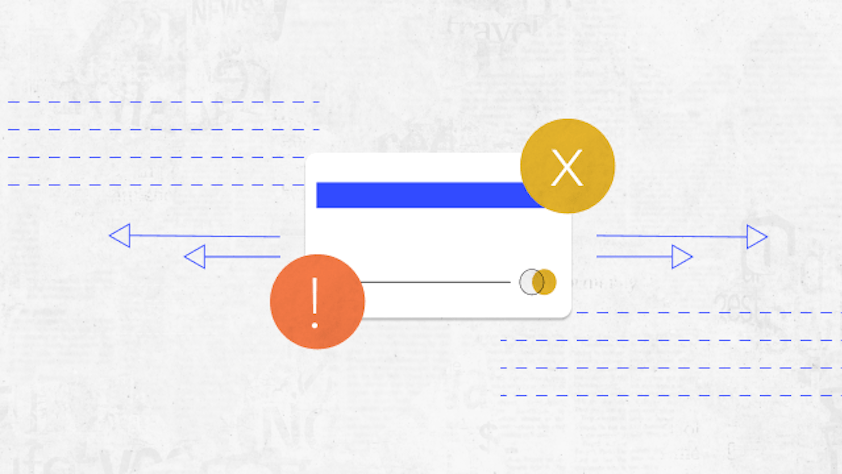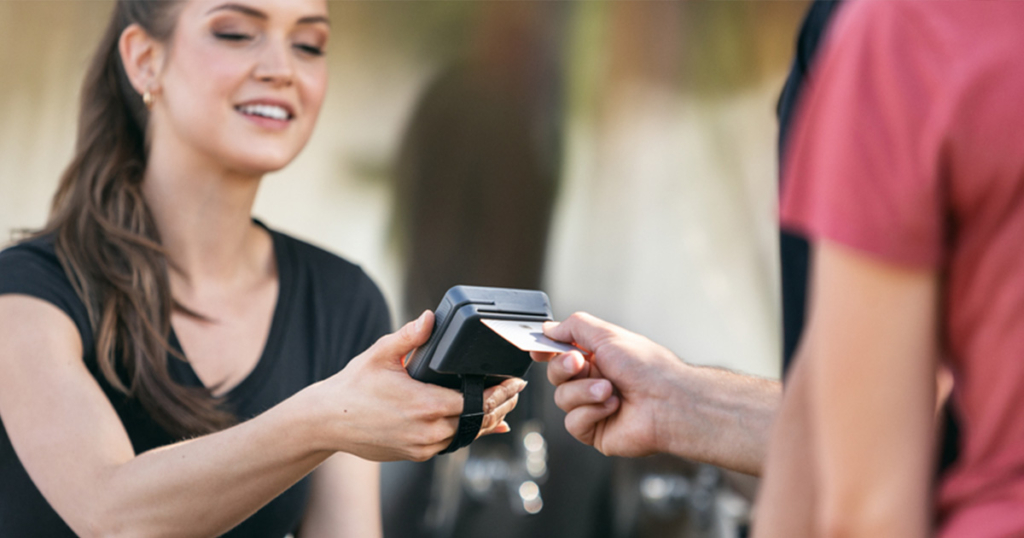
What are chargebacks and how do I avoid them?
Chargebacks are something that no business owner can afford to ignore. What are chargebacks? The chargeback process gives consumers the ability to dispute transactions made on their accounts.
Unfortunately, these payment disputes can cost merchants dearly. At current chargeback rates, merchants around the globe stand to lose as much as $117 billion by 2023.
Fortunately, there are some ways to avoid chargebacks. This guide will give you a better understanding of the chargeback process and how you can work to minimize your risk for chargebacks in your business.
What is a chargeback?
A "chargeback" refers to a reversal of payment when a customer disputes a charge on their credit or bank account statement. The concept itself came from the Fair Credit Billing Act to allow consumers to dispute unauthorized charges on their credit or bank account statements.
For instance, if a customer believes they've been charged in error, they may go to their bank and file a dispute. If approved, the customer will receive all of the funds back, though the merchant will have the ability to dispute any chargebacks.
The payment for each chargeback comes directly from the merchant's account. Additional fees usually apply, which is why chargebacks represent such a costly challenge for today's small business owners.
Difference between a chargeback and a refund
Chargebacks work very differently than a refund. In the refund process, customers request reimbursement directly from the merchant in accordance with the merchant's refund policy.
By contrast, customers initiate chargebacks directly with their bank or credit card company. This setup means that the merchant may not even be aware of the problem until the chargeback occurs.
While refunds can generally be issued with minimal hassle, chargeback fees can make this process considerably more costly than a simple refund.
Difference between a chargeback and a voided transaction
A voided transaction is one that never actually completes. However, in some cases, these transactions can be listed as "pending" on the debit or credit cardholder's account, though only for a short period.
In most cases, the pending transaction will disappear since it had been previously voided, which requires no intervention. But a settled transaction can't be voided, which means that the merchant must either issue a refund or the customer must initiate a chargeback.
Understanding the chargeback process
Because a chargeback involves a third party (i.e., the customer's bank or credit card company), the process is more involved than a simple refund. Here's how the typical chargeback process works:
- Your customer makes a purchase using a debit or credit card
- The payment is processed, and you receive funds from your payment processor
- The customer disputes the charge and files a dispute with their provider
- The issuing bank initiates the chargeback process
- As a merchant, you are given the opportunity to dispute the chargeback
- The issuing bank makes a decision
Notice that while you, the merchant, have the opportunity to dispute the chargeback, it is ultimately up to the issuing bank. Once a decision is made, the charge must either be settled by you or the customer or go into arbitration. During the arbitration process, the credit card issuer reviews the transaction and makes a final decision.
Common reasons for chargebacks
Chargebacks work to provide consumer protection, allowing customers to report fraudulent transactions on their billing statements. This condition doesn't necessarily imply a targeted scheme — sometimes, even a simple merchant error can cause a customer to be billed twice by mistake.
Unfortunately, there are many times when a chargeback request is made for legitimate debit or credit card transactions. This tactic is broadly referred to as "friendly fraud" since these chargeback disputes lie outside the intended purpose of the chargeback dispute process.
Examples of friendly fraud include:
Failing to recognize the transaction
Many customers make so many credit card purchases that they may simply not remember buying from your business. Alternatively, your business name might not appear on the customer's credit card statement. Customers may mistake these transactions for fraudulent purchases and initiate disputes.
Customer dissatisfaction
Some customers initiate a chargeback because they're unhappy about your product or service. They may find your return process hard to find, or they may simply choose to skip your return policy altogether and file a chargeback. This approach is also common when customers need to return an item despite falling outside the time limit of your return policy.
Pricing issue
The customer may also feel that they have been overcharged for the order. This interpretation could mean that they were charged the wrong price, or they were charged twice for the same product or service. Again, rather than contact you directly, these customers file a chargeback with their bank or credit card.
Delivery issue
Customers also file chargebacks when there's been a delivery issue, such as when they don't receive a product that they've ordered.
In some cases, the customer may prefer to file a dispute for fear that they've been defrauded in some way by your company. Similarly, products that arrive damaged or defective may prompt customers to dispute the transaction rather than go through your return process.
Chargeback fees
Chargeback fees can be steep. The U.S. Chamber of Commerce reports that when chargebacks occur, merchants are slapped with a fee ranging from $20 to $100. Depending on your credit card processing company, you could face even higher fees, as some traditional credit card processors are known for including extraneous fees and hidden costs.
The worst part is that your credit card processing company keeps a close eye on the number of chargeback requests your business receives. If you receive too many credit card chargebacks, your processor could suspend your merchant account or terminate it altogether.
How to fight chargebacks
What should you do if one of your customers initiates a chargeback? Remember, you have the ability to defend yourself against illegitimate chargebacks, so it helps to respond quickly to minimize lost revenue.
Determine whether the transaction was legitimate
Your sales records should provide sufficient documentation to determine whether the disputed transaction is legitimate. If you discover that the customer is correct and that the transaction is illegitimate, then you can contact your merchant services provider. Otherwise, you can proceed through the following steps.
Reach out to the customer
If you believe that the chargeback claim is not legitimate, you can reach out to the customer directly to prevent friendly fraud. Ideally, you and the customer can resolve the issue and come to some type of agreement.
Prepare your chargeback defense
The issuing bank facilitates the dispute process, so you'll need to provide documentation that shows that the transaction was legitimate. This documentation can include:
- Invoices
- Receipts
- Shipping details
- Purchase orders
In many cases, you'll successfully fight against the chargeback and avoid the fees and hassle that come with it.

How to prevent chargebacks
The best way to combat chargebacks is to prevent them from occurring. The following tips can help you address problems before the chargeback process begins:
Clearly communicate your return policy
Refunds are always better than chargebacks. Post your return policy online, in your store, and on your invoices and receipts. Additionally, include your contact information so that customers can easily contact you if there are any problems involving shipping or the product itself.
Offer a "buy online, return in store" policy
Some small business owners rely on multiple sales channels to facilitate business. Allowing customers to return online purchases in-store can encourage customers to come to you directly rather than simply contact their card issuer when there's a problem with the merchandise itself.
Follow best practices for credit card sales
When accepting credit and debit cards, always follow the best practices to prevent fraudulent charges.
For a card-present transaction, always try to swipe or insert credit/debit cards. This step can make it harder to dispute the charges, and it can eliminate human errors that can occur when entering credit card account numbers manually.
Additionally, get a signature for in-person sales. This signature provides proof that the customer accepted the charges at the time of the sale and can prevent friendly fraud by keeping consumers from disputing legitimate charges.
Use secure methods for card-not-present transactions (such as phone orders or online transactions). Common fraud prevention tools include address verification services (AVS), where you enter the customer’s zip code or use the credit card’s secure CVV number.
Ensure that your business name is recognizable
One of the causes of friendly fraud is that customers don't always recognize your business name on their credit card statements. That's because the statement may reflect your merchant account, which may be different from your doing business as (DBA) name.
To prevent friendly fraud, ensure your account name is easy to identify. For instance, if you operate a shop named "Casey's Coffee," make sure your account name is as close to this as possible (e.g., "Casey Coffee, LLC") to avoid confusion.
Don't over-promise
Every retailer knows the temptation of fudging the numbers to make that big sale. Fast shipping? Sure we can get it to you by Friday. But if you're not able to back it up, your customers might accuse you of false advertising or fraudulent business practices and could file a chargeback to dispute the transaction.
If you're unable to make good on your promises, contact the customer immediately. You might even need to proactively issue a refund for the "fast shipping" that didn't come through. This cost might be painful, but it's better than the fees and hassle that come from dealing with chargebacks and other financial disputes.
Check your messages
Check your messages often! It's possible that your customers are trying to dispute a charge and are unable to reach you, giving them no other option than to file a chargeback with their credit card company or bank.
This attentiveness means staying on top of every form of communication that customers might use, including:
- Voicemail
- Facebook/social media messages
- Paper mail/letters
If a customer contacts you directly about unauthorized transactions on their statement, it will usually be easier (and less costly) to resolve in person than going through the chargeback proceedings.
Stay organized and stay in charge
As a small business owner, it's important to keep yourself organized. That's why Invoice2go offers advanced banking software to help you keep track of your finances, as well as send invoices and receive payment electronically.
Sign up today for a free, no-obligation trial, and discover how these tools can help you stay organized and in charge of every area of your business.
Frequently asked questions
Need to know more about chargebacks and how to prevent them? Here are some of the most common questions about chargebacks:
If the customer's bank approves the chargeback, then their bank will contact the acquiring bank — that is, the merchant's account. The customer will receive a full refund, deducted from the merchant's account. Each merchant will also be responsible for paying fees ranging from $20 to $100, which can sometimes be as much as double the cost of the original transaction.
The good news for merchants is that consumers have a limited window in which to initiate chargeback claims. This window is usually between 60 and 120 days. If a cardholder claims fraud outside of this window of time, they may be able to pursue arbitration, but they won't be able to file a chargeback for the disputed items
Your chargeback ratio compares your number of chargebacks to your number of transactions in a particular window of time. Merchants with high chargeback ratios can receive penalties from their credit card networks, and if the problem is not resolved, they can lose their ability to process credit card payments.